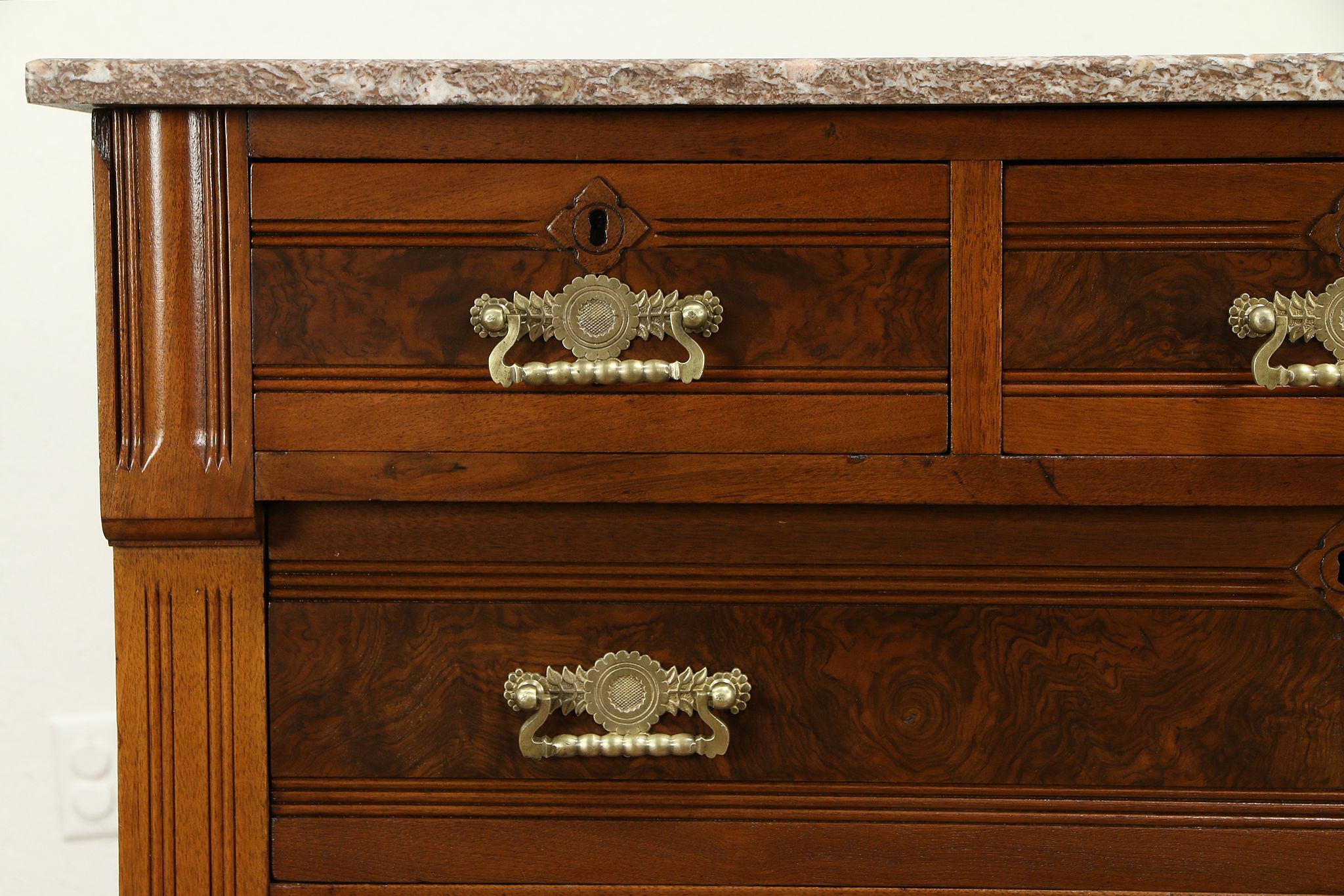
This gives the needed hold for operating either slots or spring. The best way is to examine the interior by the Braille method in order to find a slight depression for a fingertip. It pulls out as a unit but is held firmly in place by slots of wood that slide sidewise and are usually concealed in the top or by some sort of wooden spring that must be pressed to release the section. Such a section is an inch or two shallower than the pigeonholes and drawers on either side. This might be a small closet or a grouping of pigeonholes and small drawers with or without a front (Illustration II). Here the owner wrote and transacted his business and here his money and papers could be put away.Īs stated before, this Italian design inspired the central section of the interior (Illustration I) as the most logical position for concealed compartments. The desk was, of course, the favorite for such features. But from about 1720 through the Sheraton years, secret places were much in vogue. This design presents the arrangement found in interiors of English and American desks of the 18th and early 19th-Century workmanship.Īmerican cabinetmakers do not seem to have built secret places into their furniture much before the advent of the Queen Anne period, although I have heard rumors of such pieces in the William and Mary style. Behind it is a little compartment, removable if pressed carefully, and back of that two tiers of four very small drawers. In the center of the interior is a small door flanked by classical pilasters. One of polished bone (Illustration VII) is typical of Italian work. These are arranged as they fit into the space in front of this miniature chest. ILLUSTRATION V: A Pennsylvania Painted Chest: The right end, that is movable, has been raised to show the drawers concealed in the false bottom. These date from the late 16th or 17th Centuries. Secret compartments appealed to the Italian temperament and they made many cabinets, small and large, with hidden drawers and the like. Just how early English and French cabinetmakers began to turn their attention to adding these hiding places to the furniture they made is a question, but I do not think it began until after the Italian furniture influence reached them, coming either directly or via France or the Low Countries. Traveling desks and small boxes sometimes have their secret compartments, usually in the form of false bottoms. Concealed drawers may also be found in tables, particularly of the card table type, where a swinging leg supports the upper half of the top when it is folded back. Next are the chests then come sideboards, highboys and chests on chests.

With English and American furniture, the pieces most liable to contain secret compartments are desks and secretaries. Access is through the sliding panel built into the writing surface, which has been pushed back. Beneath the central section can be seen the well that occupies the space of the large false drawer. At the back can be seen an additional document box that slides behind the pigeonholes on that side. In the foreground are two of the secret drawers. The central section has been removed to show the pocket concealed at the back. ILLUSTRATION IV: Fifteen Secret Places: This is the interior of the New England Queen Anne desk illustrated on the cover. Some were large enough for several letters others were so small that only a coin or two, or possibly a half-dozen pieces of Continental currency folded in half, could be accommodated.

There were twenty-one in this simple slant-top desk. At the end, the owner came to my rescue and pointed out several that I had missed.

Sometime ago I spent an entire afternoon trying to locate the secret compartments in an American secretary that looked quite innocent of any. Some pieces have a single secret others have a score. Many a piece has yielded up its hidden caches only when sent to a cabinetmaker for thorough reconditioning.

I know of a collector who owned a piece of furniture for several years before finding that it even had a secret compartment. The sweeping statement of the Prefect regarding the stupidity of anyone who fails to find a secret drawer shows that he knew little about these ingenious evidences of the cabinetmaker’s skill. But the details of the story are beside the point. Auguste Dupin, who eventually finds the missing letter and gets the reward of 50,000 francs. Of course, it is Poe’s master detective, C. The central cabinet can be removed and hides four drawers and two document boxes. ILLUSTRATION I: An 18th-Century American Secretary: This shows the interior in place.


 0 kommentar(er)
0 kommentar(er)
